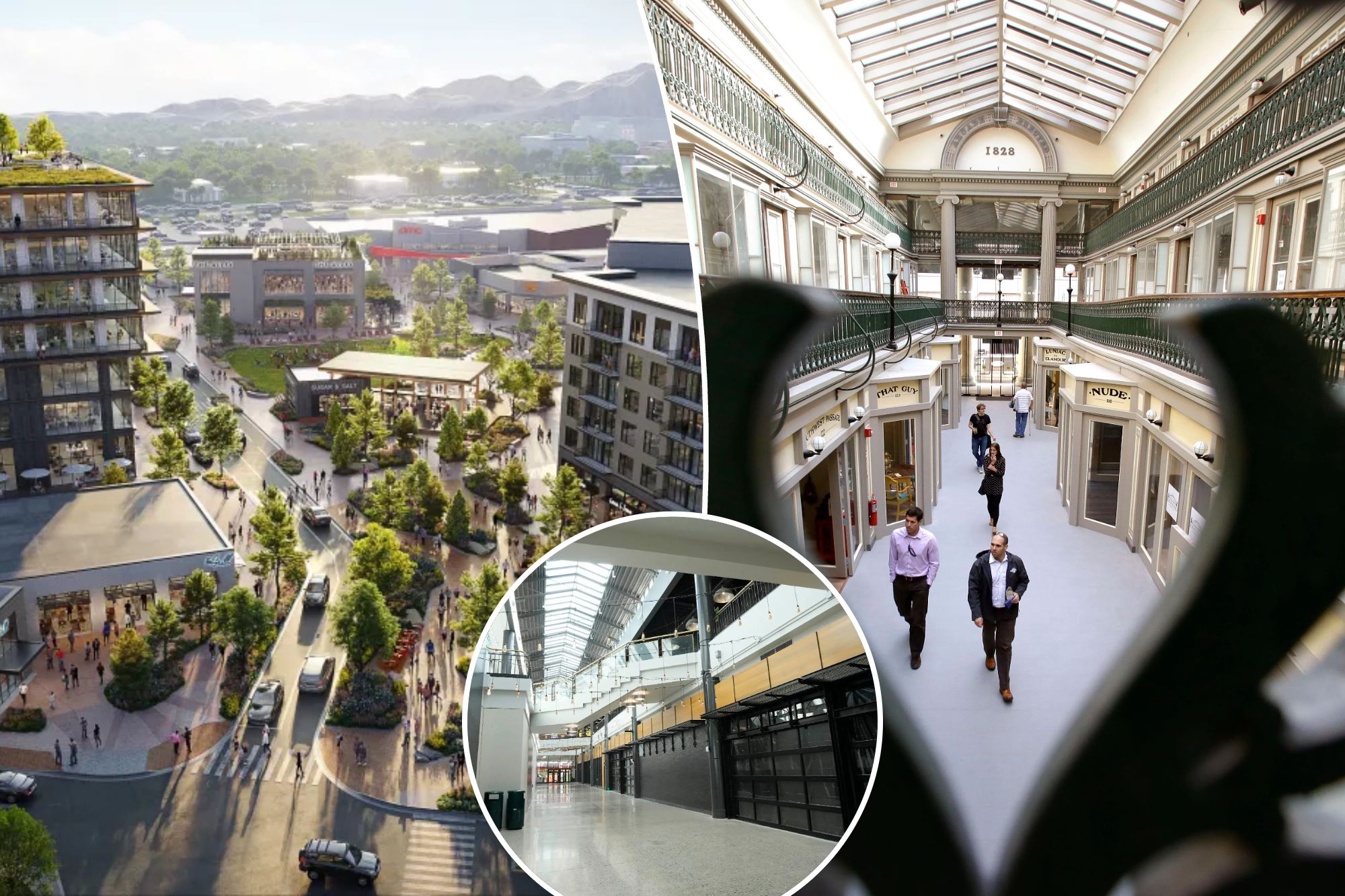
The American mall is not dying, but evolving.
Once the epicenter of suburban life, these sprawling malls are now being transformed into mixed-use centers, combining housing, retail and entertainment in a valiant bid to stay relevant in a changing world, reports CNBC.
Developers are tearing down vacant stores like Macy’s and JCPenney, trading shelves and registers for luxury apartments and affordable housing.
In some cases, entire sections of malls are being reimagined with outdoor spaces, restaurants and modern living spaces. “The mall is becoming cool again,” Jacob Knudsen, vice president of development for Macerich, which is adding housing to FlatIron Crossing Mall in Broomfield, Colorado, told CNBC.
“Being able to live with it, work with it, play with it…we’re definitely seeing that as a trend,” he said.
The push to add apartments comes as shopping centers struggle for survival. Once anchored by department stores and idolized in teen movies of decades past as hangouts, these spaces have seen a steady decline since the early 2000s.
With major retailers like Sears and JCPenney closing, developers are rethinking how to use these cavernous buildings. In some cases, they’ve been replaced by Amazon warehouses, pickleball fields or even hockey training centers.
But with a nationwide shortage of 4.5 million homes, apartments are becoming the best solution.
As of January 2022, nearly 200 U.S. malls had plans to add apartments, with dozens already completed or under construction.
In Phoenix, Arizona, Paradise Valley Mall recently opened 400 luxury units, while Lafayette Square Mall in Indianapolis plans to debut 1,200 apartments by 2025, including affordable options in a former Sears.
For developers, the numbers make sense. High-end malls still draw crowds, but more than 34 million square feet of U.S. mall space is vacant, according to real estate data.
Pacific Retail Capital Partners’ Oscar Parra explained the change in store: “There’s just too much retail in the U.S.,” he said. “[It’s] like four times higher than any other nation… I don’t know of a market that needs a million-square-foot mall.”
His firm is converting a former Carson’s warehouse near Chicago into apartments and cited a similar project at Garden State Plaza in New Jersey. “They have excess land,” Parra said. “Instead of using it for retail, they’re putting it in apartments. They saw no value in adding more retail to one of the most productive malls on the planet, and that’s a signal.”
But living downtown comes with challenges. High construction costs, outdated lease agreements and zoning laws can delay projects. And while some developers reuse existing structures, many find it easier to demolish old buildings entirely.
“What we’ve learned is that it’s better to decouple it from the mall,” Parra told CNBC. “But mostly the idea is, rip the box… scratch it, get rid of it and then create a bit of a buffer between the mall and [apartment building].
For residents who already live in these new spaces, the benefits are undeniable. At The Arcade in Providence, Rhode Island—America’s oldest indoor mall—developers converted the upper floors into 48 micro-apartments. Amy Henion, a graphic designer, moved in two years ago.
“You have access to amenities that you don’t get if you live in a house in a suburb,” she said. “If I want to cut my hair, I can walk downstairs. If I want to get lunch, I don’t have to leave the building, even if the weather outside is terrible.”
In Milwaukee, Wisconsin, Grand Avenue Mall now features apartments along with TJ Maxx, Foot Locker and a food court with a self-serve beer tap.
Resident John Borchardt likes the convenience.
“We can just walk around like five city blocks without ever going outside,” he told the media. Still, the oddities remain. Some units lack windows, while others struggle with privacy, as previous storefront designs leave some exposed space.
But for many, these are small trade-offs for living in a revitalized community. As malls reinvent themselves, developers see endless potential.
“Trading states are an opportunity,” Knudsen said. “This is an opportunity to find land and have a built-in customer base to get people into the center.”
#Living #mall #Americas #mall #condo #boom
Image Source : nypost.com